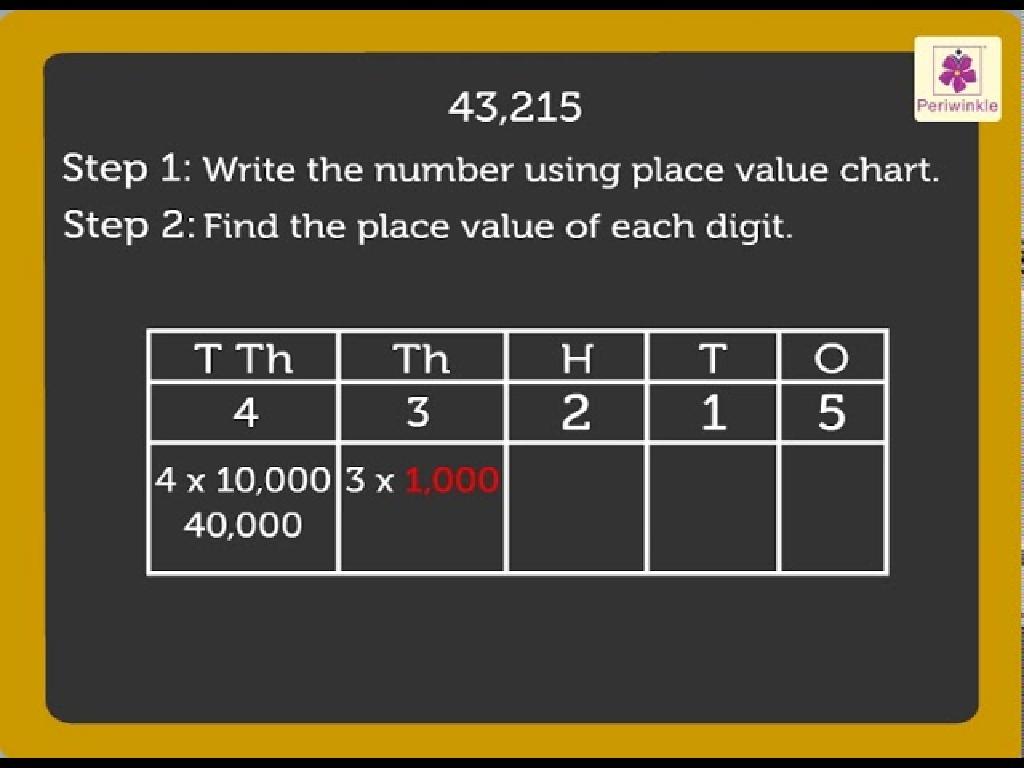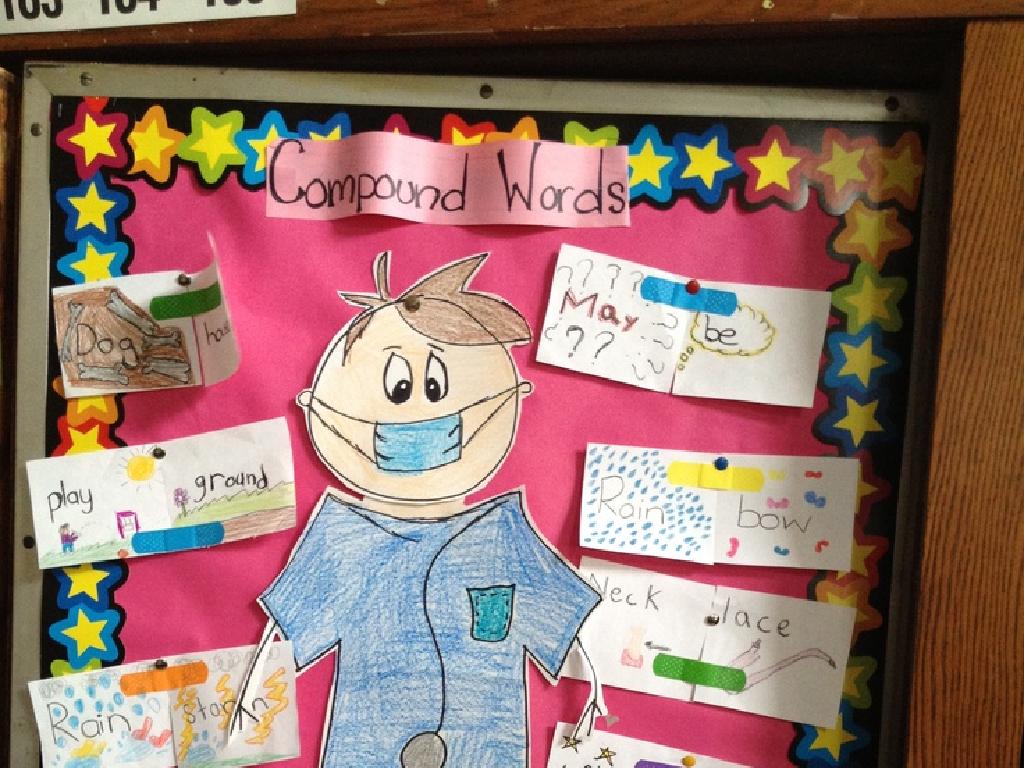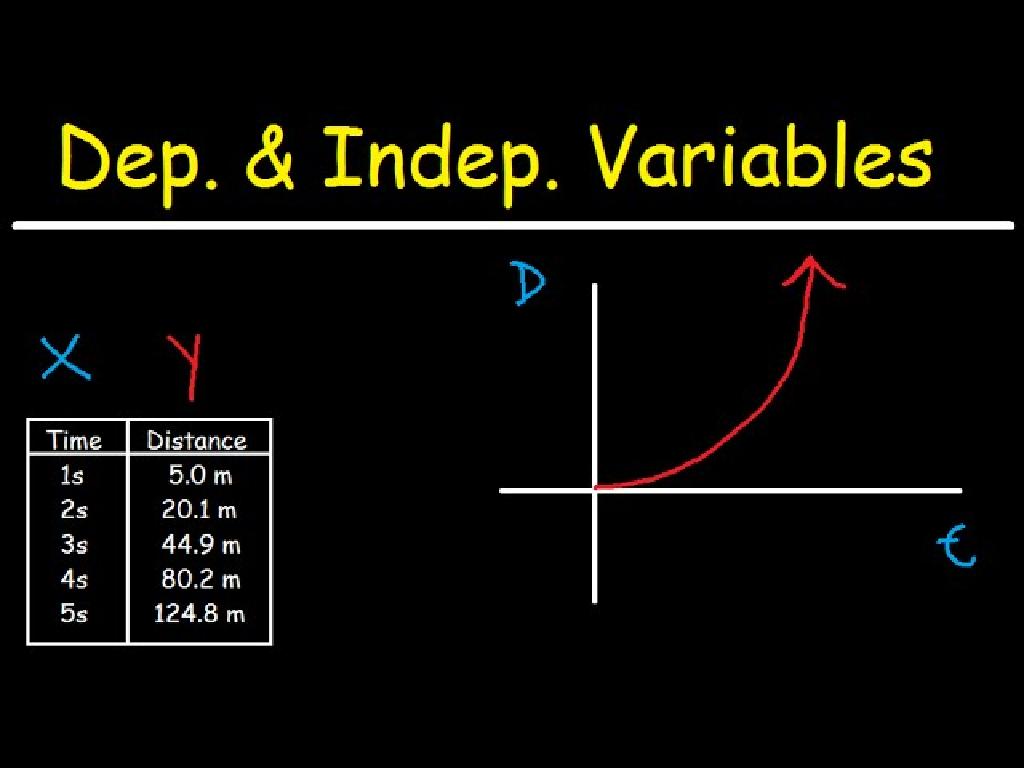Convert Mixed Metric Units
Subject: Math
Grade: Fourth grade
Topic: Metric Units Of Measurement
Please LOG IN to download the presentation. Access is available to registered users only.
View More Content
Introduction to Metric Units
– Learn metric units of measurement
– Metric units include meters for length, liters for volume, and grams for mass.
– Why metric units are important
– Metric units are used because they are universal and easy to convert.
– Explore meters, liters, and grams
– Meters measure length, liters measure volume, and grams measure mass.
– Practice converting between units
– Convert 1000 grams to 1 kilogram or 100 centimeters to 1 meter.
|
This slide introduces students to the concept of metric units of measurement, which are used worldwide for consistency and ease of understanding. Emphasize the importance of using metric units in science and everyday life. Explain that meters are used for measuring length, liters for volume, and grams for weight, and these are the base units for length, volume, and mass in the metric system. Encourage students to understand how to convert between units, such as using the fact that 1000 grams equals 1 kilogram, and to practice these conversions with real-world examples.
Understanding Mixed Metric Units
– What are mixed metric units?
– Units like 1m 35cm, combining meters (m) and centimeters (cm).
– Real-life examples
– Measuring height: 1m 52cm or buying fabric: 2m 20cm.
– Why accurate conversion matters
– Accurate conversions prevent mistakes in recipes, construction, etc.
– Practice conversion problems
|
This slide introduces the concept of mixed metric units, which are combinations of different metric units used to measure the same type of quantity, such as length or volume. For example, a person’s height might be given as 1 meter and 52 centimeters, rather than just 152 centimeters. Real-life applications include cooking, where recipes might require precise measurements, or construction, where accurate dimensions are crucial. Emphasize the importance of converting these units accurately to avoid errors in everyday tasks. Provide students with practice problems to convert mixed metric units to a single unit and vice versa, reinforcing their understanding through hands-on learning.
Converting Metric Units of Length
– Metric units: km, m, cm, mm
– Conversion rules: 1 km = 1000 m
– Remember, to convert to a smaller unit, multiply.
– Practice: 5 m to cm
– 5 meters equals 500 centimeters.
– Steps to convert units
– Multiply or divide by 10, 100, or 1000.
|
This slide introduces students to the metric units of length including kilometers, meters, centimeters, and millimeters. It explains the basic conversion rule that 1 kilometer equals 1000 meters. To provide a practical understanding, it includes a practice example where students convert 5 meters into centimeters. The conversion process involves multiplying by 100 since there are 100 centimeters in a meter. The slide emphasizes the method of multiplying or dividing by powers of 10 when converting between metric units, which is a key concept for students to grasp in metric conversions.
Converting Units of Volume
– Understanding liters and milliliters
– Liters (L) and milliliters (mL) measure volume
– Conversion: Liters to milliliters
– 1 Liter equals 1000 milliliters
– Practice: Convert 3 L to mL
– 3 Liters is equal to 3000 milliliters
|
This slide is aimed at helping fourth-grade students understand the concept of volume and how to convert between different metric units of volume. Begin by explaining that liters and milliliters are units used to measure how much space a liquid takes up. Emphasize that 1 liter is the same as 1000 milliliters, which is a key conversion fact they need to remember. Use the practice example to show them how to multiply the number of liters by 1000 to get the number of milliliters. Encourage students to solve the example on their own and come up with additional examples for practice.
Converting Units of Mass: Kilograms and Grams
– Understanding kilograms and grams
– Conversion: 1 kg equals 1000 g
– Practice: 2500 g to kilograms
– Divide 2500 grams by 1000 to get kilograms
– Steps to convert units of mass
– Use division to change grams to kilograms
|
This slide is aimed at teaching fourth-grade students the relationship between kilograms and grams and how to convert between these two units of mass. Start by explaining that the kilogram is a larger unit of mass compared to a gram. Emphasize that 1 kilogram is equal to 1000 grams. For the practice example, guide the students through the process of converting 2500 grams into kilograms by dividing by 1000, which equals 2.5 kilograms. Reinforce the concept by explaining that to convert grams to kilograms, you always divide by 1000, and to convert kilograms to grams, you multiply by 1000. Encourage students to practice with additional examples and provide immediate feedback to ensure understanding.
Conversion Strategies for Metric Units
– Use conversion charts effectively
– A chart helps us see how to change from one unit to another, like cm to m.
– Multiply and divide for unit changes
– To go larger (m to km), divide. To go smaller (cm to mm), multiply.
– Tips to remember conversion factors
– Create rhymes or phrases to help memorize key conversions.
|
This slide aims to equip fourth-grade students with strategies to convert between different metric units. Start by explaining the use of conversion charts and how they can simplify the process of moving from one unit to another. Demonstrate the use of multiplication and division in unit conversion, emphasizing that multiplication is used when converting to a smaller unit, and division is used for a larger unit. Share mnemonic devices or memory aids to help students remember conversion factors, such as ‘King Henry Died By Drinking Chocolate Milk’ for kilo-, hecto-, deka-, base unit, deci-, centi-, milli-. Encourage students to practice these strategies with real-life examples and provide worksheets for additional practice.
Class Activity: Conversion Relay
– Split into teams for a relay
– Solve a metric conversion problem
– Example: Convert 2.5 km to meters
– Pass to the next team member
– First team with correct answers wins
|
This activity is designed to make learning about metric conversions interactive and fun. Divide the class into small teams, and give each team a different conversion problem involving mixed metric units, such as converting kilometers to meters, grams to kilograms, or liters to milliliters. Each team member must solve one problem before passing the baton to the next. The first team to have all members complete their conversions correctly wins. Make sure to prepare a variety of problems to cover different units of measurement. This will help students practice quick thinking and reinforce their understanding of the metric system. Have a prize ready for the winning team to motivate the students.
Wrapping Up: Metric Unit Conversions
– Review of metric unit conversions
– Practice is key to mastery
– Homework: Conversion worksheet
– Complete the provided worksheet to practice converting between different metric units.
– Bring questions to next class
– If you find any problems tricky, write them down to discuss in our next class.
|
As we conclude today’s lesson, it’s important to recap the steps for converting mixed metric units. Emphasize to the students that becoming proficient in these conversions requires practice, which is why the homework is essential. The worksheet will reinforce today’s learning and help identify areas where they may need further clarification. Remind students to attempt all problems and to bring any questions they have to the next class for discussion. This will ensure that they are well-prepared and confident in their ability to handle metric conversions.






